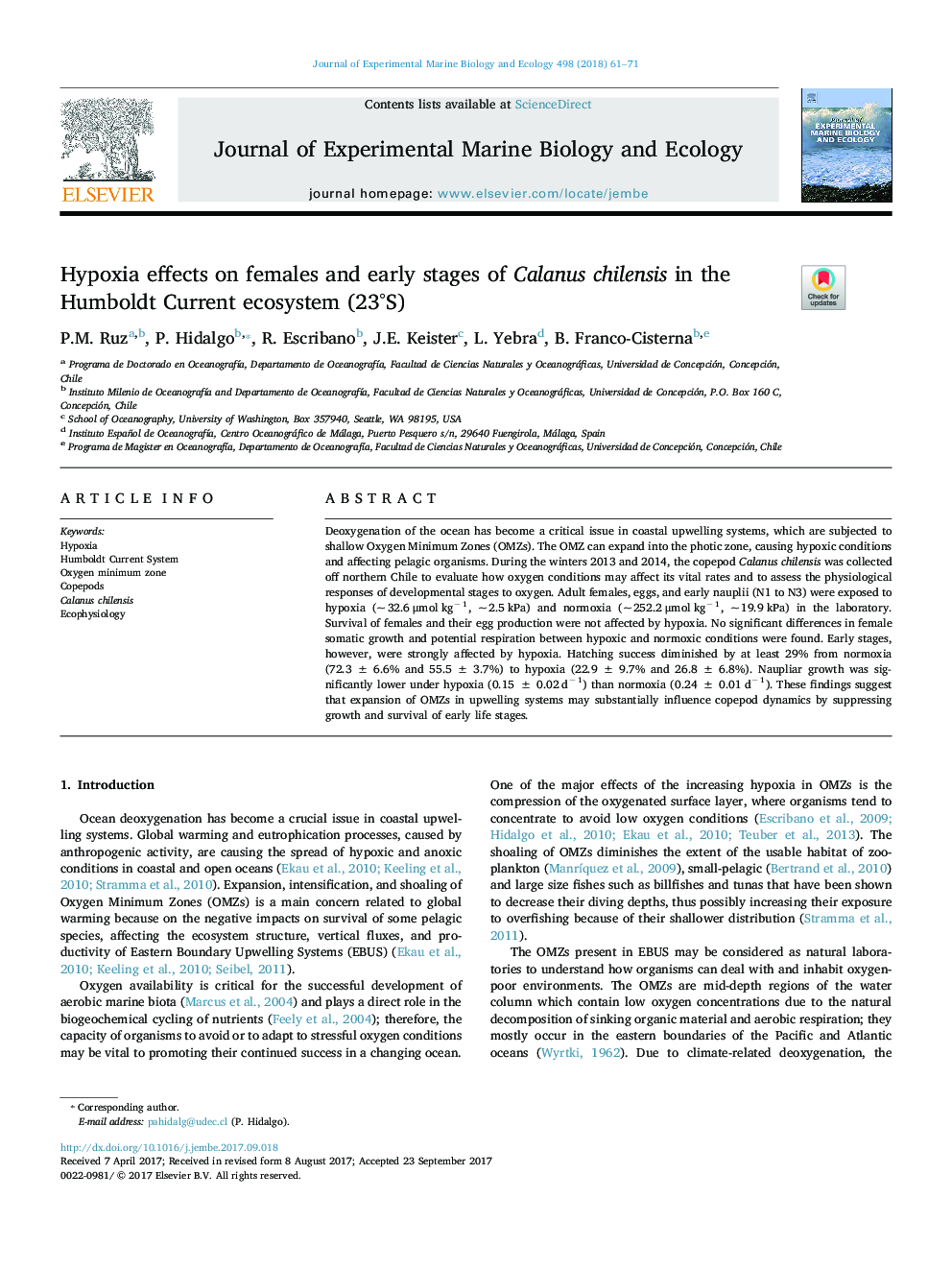| Article ID | Journal | Published Year | Pages | File Type |
|---|---|---|---|---|
| 8849030 | Journal of Experimental Marine Biology and Ecology | 2018 | 11 Pages |
Abstract
Deoxygenation of the ocean has become a critical issue in coastal upwelling systems, which are subjected to shallow Oxygen Minimum Zones (OMZs). The OMZ can expand into the photic zone, causing hypoxic conditions and affecting pelagic organisms. During the winters 2013 and 2014, the copepod Calanus chilensis was collected off northern Chile to evaluate how oxygen conditions may affect its vital rates and to assess the physiological responses of developmental stages to oxygen. Adult females, eggs, and early nauplii (N1 to N3) were exposed to hypoxia (~ 32.6 μmol kgâ 1, ~ 2.5 kPa) and normoxia (~ 252.2 μmol kgâ 1, ~ 19.9 kPa) in the laboratory. Survival of females and their egg production were not affected by hypoxia. No significant differences in female somatic growth and potential respiration between hypoxic and normoxic conditions were found. Early stages, however, were strongly affected by hypoxia. Hatching success diminished by at least 29% from normoxia (72.3 ± 6.6% and 55.5 ± 3.7%) to hypoxia (22.9 ± 9.7% and 26.8 ± 6.8%). Naupliar growth was significantly lower under hypoxia (0.15 ± 0.02 dâ 1) than normoxia (0.24 ± 0.01 dâ 1). These findings suggest that expansion of OMZs in upwelling systems may substantially influence copepod dynamics by suppressing growth and survival of early life stages.
Related Topics
Life Sciences
Agricultural and Biological Sciences
Aquatic Science
Authors
P.M. Ruz, P. Hidalgo, R. Escribano, J.E. Keister, L. Yebra, B. Franco-Cisterna,
